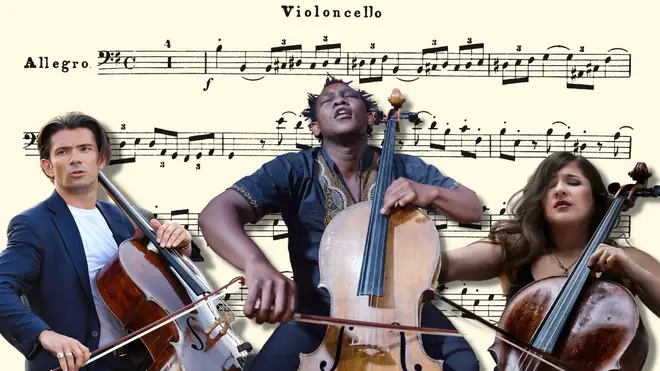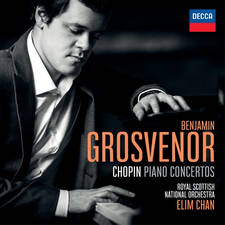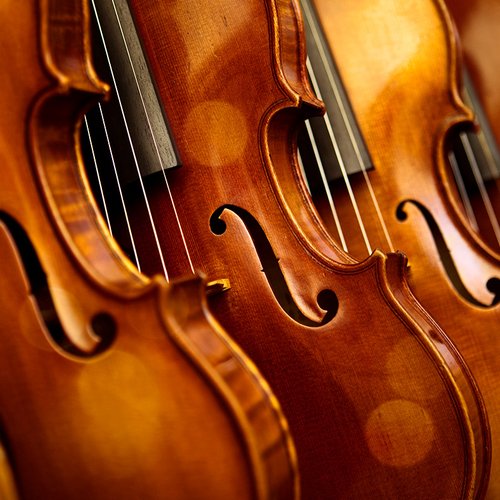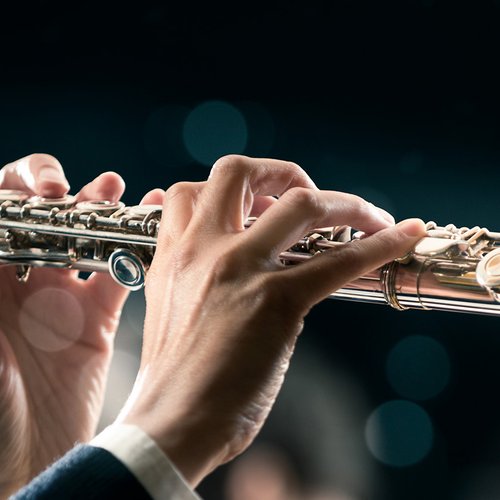These are factually the 15 best cello pieces in existence
1 August 2023, 19:39 | Updated: 1 August 2023, 19:40

What are the best works written for cello? Step this way for the most striking, stirring and inspiring works ever written for this beautiful instrument.
-
J.S. Bach – Cello Suites
These six extraordinary works tower over the entire cello repertoire and are both the starting point and the musical zenith, for any solo cellist.
Baroque composer Johann Sebastian Bach wrote these works between 1717 and 1723, at a time of great artistic happiness while Kapellmeister in Köthen. Each suite is for solo cello and comprises a prelude followed by movements based on Baroque dance forms. They are remarkable not only for the way Bach makes his solo line dance and move, but also for their human quality, with every movement feeling like an exploration and a deep emotional journey.
All six suites are incredible, and can be enjoyed as a set – but it’s the flowing, story-telling broken chords of the Prelude to the first suite which hold a unique power over players and listeners alike.

Yo-Yo Ma plays J.S. Bach's Cello Suite No. 1 | Classic FM Sessions
-
Vivaldi – Double Concerto for Two Cellos
Antonio Vivaldi was the master of the Baroque concerto, writing over 500 works for all sorts of instruments and combinations, and all sure-fire hits.
This concerto for two cellos was found bound up with collections of sacred music, suggesting that it may have been performed in church settings, in Baroque Venice. As with so much of the Red Priest’s output, this stylishly divine double has stood the test of time.

VIVALDI - Concerto for Two Cellos – René Schiffer, Mimé Brinkmann – Apollo's Fire
-
Haydn – Cello Concerto in C
For many years through the Baroque and early Classical eras, the cello was the hard-working bass instrument of small ensembles, grounding the harmony and sound, and labouring in support of more high-flying solo instruments and voice.
But then along came Haydn and his vision for what the instrument could be in the classical era.
This C-major concerto has a gem-like quality. Melodies flow unbidden throughout all of its three movements, but the real moment is the charmingly declamatory opening phrase for the soloist. It’s almost as if the instrument is saying: “Hello world, I’m here, and here’s what I can do.”
Read more: The 20 greatest concertos in classical music

Haydn: 1. Cellokonzert C-Dur ∙ hr-Sinfonieorchester ∙ Bruno Philippe ∙ Christoph Eschenbach
-
Beethoven – Cello Sonata No. 3
Hot on the heels of Haydn’s concerto liberation, Beethoven also got ideas about the potential for the cello.
The great British cellist Steven Isserlis characterised this sonata, which is Beethoven’s third of five, as the first in the repertoire to give equal prominence to both piano and cello. This sonata is a specimen of a perfectly balanced duet, a gem of interweaving melody and accompaniment roles, offering the instrument its time in the chamber music sun.

Beethoven: Cello Sonata in A Major & Mendelssohn: Lied ohne Worte in D Major / Gabetta / Cho
-
Boccherini Cello Concerto in G
Luigi Boccherini was a virtuoso cellist and one of the great talents of his time. Along with Haydn and C.P.E. Bach he helped revolutionise the cello for the classical era. The Italian composer wrote 12 concertos for his instrument, which are full of charm and Mediterranean sunshine. Just listen to the utter joy of his Cello Concerto in G...

Laura van der Heijden plays Boccherini's Cello Concerto in G | Classic FM's Rising Stars
-
Brahms – Cello Sonata No. 1
Straight from the off, you know this sonata is going to be something very special. Over plaintive piano chords, a cello enters, full of sonority and emotion. Brahms’ probing melodies feel like a cry coming from deep inside this beautiful instrument.
The central movement is an exquisite minuet, and is followed by a turbo-charged finale, full of intensity. The cello is unleashed for the Romantic era...

Brahms: Sonata for cello and piano n°1, op.38 | Ophélie Gaillard, Ferenc Vizi
-
Dvorák - Cello Concerto in B minor
It’s interesting that 100 years passed without a truly great cello concerto. After the Haydn and Bocceherini we waited until the late 1800s for the instrument to take a symphonic centre stage again.
The reason in part was projection. As orchestras got larger, the cello simply did not have the cut-through that a violin or piano had as a soloist. As instrumental technology improved, so did the sound of the cello, and it could once again take its place in front of the large ensembles of the Romantic era.
Dvorák’s monumental work was composed in 1895. It’s a singular, daring and dramatic piece, full of powerful melodies and rich sounds, which set the tone for the 20th century and everything the cello could be.

PABLO FERRÁNDEZ, DVORAK CELLO CONCERTO (2018)/Vasily Petrenko and Israel Philharmonic
-
Camille Saint-Saëns – The Swan
Unquestionably one of the most beautiful melodies ever written, ‘The Swan’ glides in as the eternal movement from Camille Saint-Saëns’s inventive and mirthful menagerie The Carnival of the Animals.
The composer wrote some stonking cello concertos himself, but the uncommon serenity of this movement deserves mention all on its own.

Yo-Yo Ma, Kathryn Stott - The Swan (Saint-Saëns)
-
Samuel Coleridge-Taylor – Variations for cello and piano
The British composer gained considerable fame during his lifetime for his orchestral, chamber and vocal works. After Samuel Coleridge-Taylor’s death and many decades of neglect, his pieces are being shared anew as the nation rediscovers one of our finest composers.
These Variations were composed in 1905, lost for several years and then published in 1918. The theme and highly appealing set of variations in four movements bring an almost concerto-like scale to the two instruments.
Read more: Who was composer Samuel Coleridge-Taylor and what are his most famous works?

Samuel Coleridge-Taylor Variations for Cello, Razvan Suma & Rebeca Omordia
-
Rachmaninov – Cello Sonata
Composed in 1901, this is a rich, intricate sonata that is strung together with Rachmaninov’s customary long melodic lines and sense of story-telling.
In the piece, the great virtuoso composer-pianist wanted to elevate his instrument beyond any sense of accompaniment. Cello and piano are equals in this lavish music. Most of the themes are introduced by the piano before being embellished and expanded in the cello part, as this wonderful music unfolds over four sublime movements.

Rachmaninoff: Cello Sonata in G Minor, Op. 19 - II. Allegro scherzando
-
Elgar – Cello Concerto
A true masterpiece. Yearning, regret and sad majesty sail through the hummable melodies and richly orchestrated moods of this concerto, which feels peak-Elgar.
The premiere recording was made by Beatrice Harrison, with the composer himself conducting in 1920. However, it was a young cellist who for millions unlocked the emotional power of the autumnal work. Jacqueline du Pré was 20 when she recorded the Elgar Concerto with the London Symphony Orchestra and conductor Sir John Barbirolli.
Since then it’s become an adored staple of cello repertoire, and an emotional Everest for all great players.

Sol Gabetta With Sir Simon Rattle - Elgar: Cello Concerto
-
Kodály – Sonata for Solo Cello
Hungarian composer Zoltán Kodály wrote this extraordinary work in 1915.
Musically, it contains hints of Debussy and Bartók, as well as the influence of Hungarian folk music. On a technical level, Kodály fundamentally altered the cello’s tuning to achieve the effect of his solo sonata, placing huge demands on both instrument and player.
Kodály himself confidently predicted that, “in 25 years no cellist will be accepted who has not played it.” Indeed it has become a staple of competitions and holds a place as truly a cellist’s cello work, through which players can showcase their instrumental mettle.

Jean-Guihen Queyras - Kodály, Sonata for solo cello Op. 8, I. Allegro maestoso ma appassionato
-
Shostakovich – Cello Concerto No. 1
This concerto opens with a bold four-note main motive that sounds derived from the composer’s musical cryptogram D-S-C-H, which Dmitry S(c)hostakovich used to sign his name in much of his music.
Hold on to your hats for three movements packed full of brilliance and intensity from one of the 20th century’s great composers.

Shostakovich - Cello Concerto no. 1 in E-flat major, op. 107 (Capuçon / Gergiev / Münchner Phil)
-
Matilde Capuis – Three Moments for cello and string orchestra
Matilde Capuis was an Italian organist, pianist, music educator and composer. She studied in Venice and Florence before taking a role at Conservatorio Giuseppe Verdi of Turin, where she was chair of theory and later composition. Capuis wrote five sonatas for cello and piano, as well as many other works for cello in other chamber formations.
Her Three Moments for cello and string orchestra are evocative works with a striking modal, church-like feel.
Capuis died in 2017 at the age of 104.

Tre Momenti for Cello and String Orchestra: I. Speranze
-
Britten – Suite No. 1 for Solo Cello
And we end as we began, with solo cello.
Dedicated to the one and only Mstislav Rostropovich, Britten’s first cello suite is a stark and demanding work that seamlessly locks together nine movements.
The English composer drew on techniques and textures from the much earlier Bach suites, and imbued them with his signature musical voice and mood.
All three suites were perfectly suited to Rostropovich’s elastic playing style in particular, but many cellists have long since found them hugely rewarding and inventive works to make their own.

Britten: First Suite for Cello

























